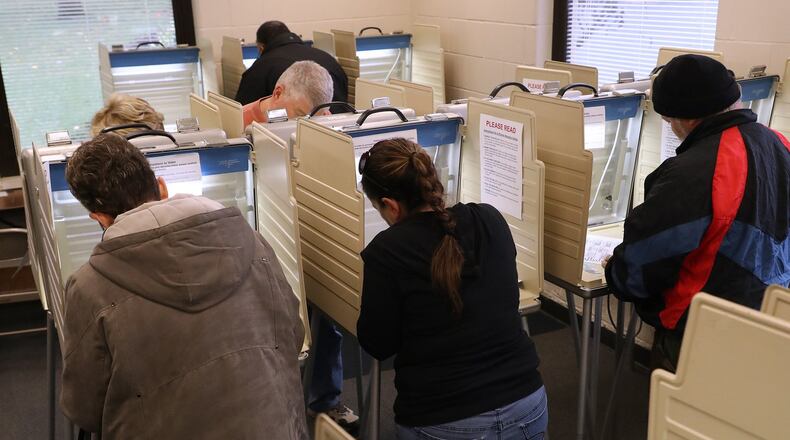MORE: Clark County debuts potential new equipment to voters
Ohio’s elections chief Secretary of State Jon Husted said that more than 275,000 inactive Ohio voters are being sent so-called “last chance mailings” notifications. Husted said that’s the total number of notifications going out from county boards of elections as part of Ohio’s contested process for keeping its list of eligible voters up-to-date.
If residents don’t respond or don’t vote in at least 12 elections, don’t request absentee ballot applications in even-numbered year general elections or don’t have their information automatically updated in transactions with Ohio Bureau of Motor Vehicles offices — if voters “ignore” those attempts to keep them on the rolls, they are sent a “last chance” notice, according to the secretary of state’s office.
Clark County Board of Elections Director Jason Baker said his office followed state mandates that required they send letters to voters who were going to be removed. A few did respond telling his office to keep them on the rolls, however, the majority didn’t, he said.
“Most of them came back undeliverable and that means we don’t have an address for that voter,” he said.
People who haven’t voted in the last six years and didn’t respond to the letter will be removed, Baker said.
Ohio’s procedure for maintaining its voter rolls is considered one of the most stringent in the nation, because it employs a “supplemental process” that has led to the removal of thousands of people who failed to vote and then didn’t respond to government requests to affirm their registrations.
EXTRA: 4 Springfield voting precincts moving to new location
Civil rights groups unsuccessfully challenged Ohio’s regimen as a voter “purge” ahead of last year’s election — claiming it violated a provision of the voter registration law that prohibits rescinding someone’s registration “by reason of the person’s failure to vote.” The U.S. Supreme Court rejected their arguments, finding in Husted’s favor. Nonetheless, he temporarily put the procedures on hold to avoid confusion during the November election, in which he was elected lieutenant governor.
Springfield NAACP President Denise Williams said voters should not be purged from the rolls.
“I don’t like it. What’s the purpose of doing that? It’s another ploy,” Williams said. “I think everyone should take this seriously. If they haven’t voted in the last election they need to go down there and make sure they are registered.”
Williams characterized the move as voter suppression and encourages everyone to double check that they are registered to vote.
Mark Caleb Smith, chair of the political science department at Cedarville University, said states have a right to update information about voters.
There has been a history in this country of this kind of process being abused, Smith acknowledged.
But he added: “I don’t really see any evidence in this situation or in similar situations that this is being done purely for discriminatory effect.
“There’s always a balance you can strike between having a reasonable system of voting and then possibly having that system affect certain people in certain ways,” Smith also said. “I don’t know if that’s really escapable.”
Ohio’s voting rules are of particular interest nationally, because it’s one of the larger swing states with the potential to determine the outcome of presidential elections.
The state’s maintenance procedures stemmed from a requirement in federal law that states have to make an effort to keep their voter rolls in good shape by removing people who have moved or died. Husted’s office said most of the 275,000 voters receiving last chance notices have, in fact, probably either moved out of state or died.
Ohio secretaries of state of both parties have used voters’ inactivity to trigger the removal process since 1994.
Voters can re-activate their registration by following instructions in the mailing, notifying their county board of elections or by visiting MyOhioVote.com, according to the secretary of state's office.
The Associated Press contributed to this article.
Facts and figures
2,5000: Number of people removed from Clark County election rolls
900: number of people removed from the Champaign County election rolls
275,000: number of Ohioans that will be removed from election rolls across the state

